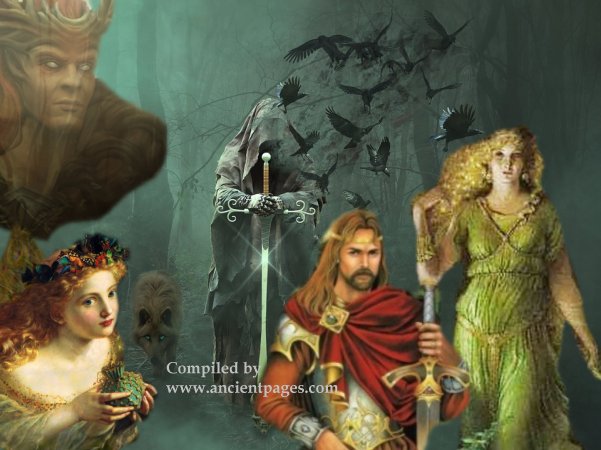Celtic Valhalla And Sacred Wells – Magic Of Invisible Worlds
Ellen Lloyd - AncientPages.com - The boundary between what we define as reality and the invisible world is thin. To ancient Celts, hidden realms were just as significant as the physical world our naked eye can perceive. Glimpses of these unseen worlds could occasionally be spotted but only by the enlightened ones.
Adobe Stock - Teodor Lazarev - conceptcafe - Compilation: AncientPages.com
Like most ancient cultures, Water was sacred to ancient Celts, and so was nature.
"People have observed the Water and its powers over the centuries and created myths and legends about it. Water has been credited with purification and healing effects.
In many cultures, ponds, pools, and especially springs were believed to be abodes for water sprites, nymphs, or dangerous, prophetic demons." 1
From early Celtic literature, we learn the importance of magic and the supernatural that sculpted the destinies of many Celtic heroes and gods, along with curses, shapeshifting, and prophecies.
Fairies Preventing Access To Sacred Water
Ancient Celts worshipped Water in all forms and made votive offerings by throwing sacred objects such as jewelry and weapons into rivers and lakes.
Springs and wells were sacred as the Celts believed their Water held magical properties and could heal almost anything. Wells were often guarded by fairies who occasionally could prevent magical water access.
One example of such an event comes from King Conary Mor's legend cycle, a story beautifully narrated in T.W. Rolleston's book Celtic Myths and Legends.
"The preliminary events of the cycle are transacted in the "Land of Youth," the mystic country of the People of Dana after their dispossession by the Children of Miled." 2
Tir na n'Og, the Land of Youth, also known as the Land of the Forever Young, is a realm of the afterlife and one of the Happy Islands, known mainly from Celtic and Irish legends.
"It was the 'Land of the Forever Young,' often identified as an underground realm or a mysterious land beneath the sea. The inhabitants of this magical place would remain forever young and happy. Nobody wanted food or drink, and illness, ugliness, and death did not have access to Tir na n'Og. As on other Happy Islands also on Tír na nÓg, the time flows slower than in the land of mortals." 3
St Oran's Well, Oranmore, County Galway, Ireland. Credit: Sheila1988 - CC BY-SA 4.0
The legend tells that when the dying King Conary Mor, who is very thirsty "is perishing of thirst, asks mac Cecht to procure him a drink, and mac Cecht turns to Conall and asks him whether he will get the drink for the king or stay to protect him while mac Cecht does it.
"Leave the defense of the king to us," says Conall, "and go thou to seek the drink, for of thee it is demanded." Mac Cecht then, taking Conary's golden cup, rushes forth, bursting through the surrounding host, and goes to seek for Water. Then Conall, and Cormac of Ulster, and the other champions, issue forth in turn, slaying multitudes of the enemy; some return wounded and weary to the little band in the Hostel, while others cut their way through the ring of foes. Conall, Sencha, and Duftach stand by Conary till the end; but mac Cecht is long in returning, Conary perishes of thirst, and the three heroes then fight their way out and escape, "wounded, broken, and maimed."
Meantime mac Cecht has rushed over Ireland in a frantic search for the Water. He tries the Well of Kesair in Wicklow in vain; he goes to the great rivers, Shannon and Slayney, Bann and Barrow—they all hide away at his approach; the lakes deny him also; at last he finds a lake, Loch Gara in Roscommon, which failed to hide itself in time, and thereat he fills his cup.
But the Fairy Folk, who is here manifestly elemental powers controlling the forces of nature, have sealed all the sources against him.
In the morning, he returned to the Hostel with the precious and hard-won draught but found the defenders all dead o,r fled, and two of the reavers in the act of striking off the head of Conary. Mac Cecht struck off the head of one of them and hurled a vast pillar stone after the other, who was escaping with Conary's head. The reaver fell dead on the spot, and mac Cecht, taking up his master's head, poured the Water into its mouth.
Thereupon the head spoke, and praised and thanked him for the deed." 2
As Iain Zaczek explained in the book Chronicles of the Celts, "wells also had associations with the Otherworld and, in Celtic tradition, they often possessed some magical properties linked to ritual activity. In many cases, this occurred after the severed head of an important person had been deposited into the well. The coming of Christianity did little to affect the high status of these sacred sites." 4
A Journey To The Celtic Valhalla
Many descriptions of the mysterious Celtic Otherworld are known under various names. As previously explained on AncientPages.com, some stories say, "If you look through the Irish mist, you might catch a glimpse of the enigmatic Celtic Otherworld. Some ancient legends tell this beautiful place, shrouded in mystery, co-exists next to our reality, like a parallel invisible world.
Other myths and legends say the Celtic Otherworld is hidden underground and can be reached by entering ancient burial mounds.
The location of the Celtic Otherworld is unknown. Still, it is home to the Tuatha Dé Danann, the people of the Goddess Danu, a supernatural race of God-like beings who invaded and ruled Ireland thousands of years ago." 5
In Wales, the Otherworld "was usually called Annwn, the kingdom featured in the story about Pwyll. Here the place does not seem too menacing, but in The Spoils of Annwn" – an episode of The Book Taliesin – it proved deadly. Arthur's quest to retrieve a magical cauldron of plenty cost the lives of most of his men. Equally dangerous were the Hounds of Annwn, spectral dogs that flew through the air at night, presaging death or disaster.
In Irish lore, the Otherworld took on more varied forms and was often associated with the Celtic belief in the afterlife. It was Tir na Nog, the Land of the Ever-youthful in its most idyllic state. Oisin came with his lover, Niamh, and stayed for three hundred years. The otherworld Hostels or Bruidheim were almost as pleasurable. These resembled a kind of Celtic Valhalla where the emphasis was on feasting, revelry, music, and lovemaking." 4
When described this way, the vision of the Celtic Otherworld strongly reminds us of Valhalla, the Viking warriors' dream destination.
Many ancient Celtic beliefs had metaphysical aspects that we have only started exploring in recent years.
Written by - Ellen Lloyd – AncientPages.com
Updated on December 3, 2023
Copyright © AncientPages.com All rights reserved. This material may not be published, broadcast, rewritten or redistributed in whole or part without the express written permission of AncientPages.com
Expand for references- Sutherland - Power Of Water In Beliefs Of Ancient Cultures - AncientPages.com
- W. Rolleston – Celtic Myths and Legends
- Sutherland - Tír na nÓg – Mythical Land Where Time Floats Slower Than In Mortal Lands, AncientPages.com
- Iain Zaczek – Chronicles of the Celts
- Ellen Lloyd - Elusive Celtic Otherworld Where Tuatha Dé Danann Reside And Time Passes Slower, AncientPages.com
More From Ancient Pages
-
 Civita di Bagnoregio – Magnificent 2,500-Year-Old Etruscan City In The Sky Is Struggling To Survive
Featured Stories | Jun 23, 2021
Civita di Bagnoregio – Magnificent 2,500-Year-Old Etruscan City In The Sky Is Struggling To Survive
Featured Stories | Jun 23, 2021 -
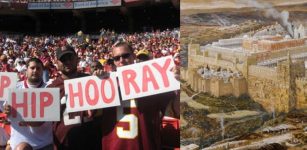 The Phrase Hip Hip Hooray Has Ancient Roots
Ancient History Facts | Jun 6, 2018
The Phrase Hip Hip Hooray Has Ancient Roots
Ancient History Facts | Jun 6, 2018 -
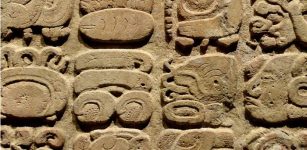 On This Day In History: Spanish Priest Diego de Landa Burned The Sacred Books Of Maya – On July 12, 1562
News | Jul 12, 2016
On This Day In History: Spanish Priest Diego de Landa Burned The Sacred Books Of Maya – On July 12, 1562
News | Jul 12, 2016 -
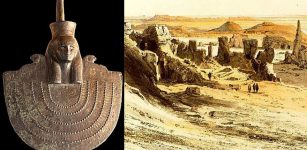 City Of Sais: Prehistoric Prestigious Cult Center Of Northern Egypt
Featured Stories | Oct 31, 2016
City Of Sais: Prehistoric Prestigious Cult Center Of Northern Egypt
Featured Stories | Oct 31, 2016 -
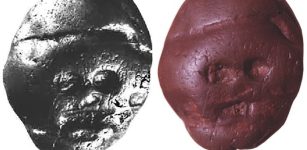 Why Are Manuports Like The Makapansgat Cobble Interesting Archaeological Artifacts?
Artifacts | Mar 15, 2024
Why Are Manuports Like The Makapansgat Cobble Interesting Archaeological Artifacts?
Artifacts | Mar 15, 2024 -
![Horses in the Eurasian steppes: Already 5000 years ago, they served pastoralists as a source of milk and a means of… [more] © A. Senokosov](https://www.ancientpages.com/wp-content/uploads/2021/09/pastoraliststeppe15-307x150.jpg) Milk Enabled Massive Steppe Migration – A New Study
Archaeology | Sep 24, 2021
Milk Enabled Massive Steppe Migration – A New Study
Archaeology | Sep 24, 2021 -
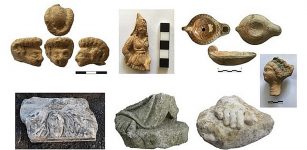 Excavations Of Ancient Theater In 2,400-Year-Old City Of Smyrna, Turkey
Archaeology | Feb 13, 2019
Excavations Of Ancient Theater In 2,400-Year-Old City Of Smyrna, Turkey
Archaeology | Feb 13, 2019 -
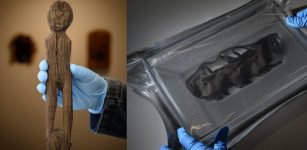 Ancient Artifacts Hidden Beneath The Ice In Danger As Glaciers Are Melting
Archaeology | Oct 19, 2020
Ancient Artifacts Hidden Beneath The Ice In Danger As Glaciers Are Melting
Archaeology | Oct 19, 2020 -
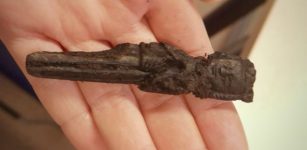 Strange Medieval Figurine With A Crown On The Head And A Falcon On The Arm – Is It A King Or A Queen?
Archaeology | Dec 16, 2021
Strange Medieval Figurine With A Crown On The Head And A Falcon On The Arm – Is It A King Or A Queen?
Archaeology | Dec 16, 2021 -
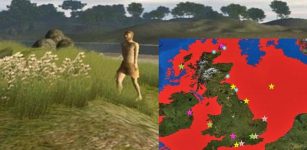 DNA From Doggerland That Separates The UK From Europe – New Study
Archaeology | Jul 20, 2020
DNA From Doggerland That Separates The UK From Europe – New Study
Archaeology | Jul 20, 2020 -
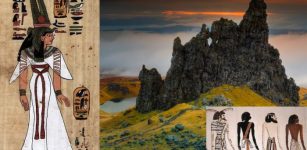 Ancestors Of The Irish And Scots Came From Biblical Lands And Ancient Egypt – Myths, History And DNA
Civilizations | Jul 14, 2020
Ancestors Of The Irish And Scots Came From Biblical Lands And Ancient Egypt – Myths, History And DNA
Civilizations | Jul 14, 2020 -
 On This Day In History: The Battle Of Actium Took Place On Sep 2, 31 BC
News | Sep 2, 2016
On This Day In History: The Battle Of Actium Took Place On Sep 2, 31 BC
News | Sep 2, 2016 -
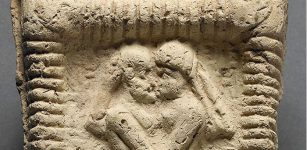 Humanity’s Earliest Recorded Kiss Occurred In Mesopotamia 4,500 Years Ago – New Study
Archaeology | May 18, 2023
Humanity’s Earliest Recorded Kiss Occurred In Mesopotamia 4,500 Years Ago – New Study
Archaeology | May 18, 2023 -
 Medieval Ship Discovered Off The West Coast Of Sweden May Have Been Attacked By Pirates
Archaeology | Feb 4, 2022
Medieval Ship Discovered Off The West Coast Of Sweden May Have Been Attacked By Pirates
Archaeology | Feb 4, 2022 -
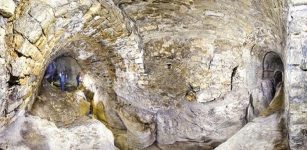 Centuries-Old Hidden Tunnels Will Be A New Tourist Attraction In Turkey
Archaeology | Apr 27, 2020
Centuries-Old Hidden Tunnels Will Be A New Tourist Attraction In Turkey
Archaeology | Apr 27, 2020 -
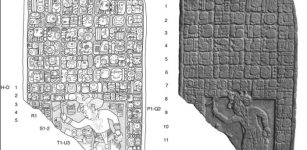 Long-Lost Ancient Maya Kingdom Unearthed In Mexico
Archaeology | Mar 12, 2020
Long-Lost Ancient Maya Kingdom Unearthed In Mexico
Archaeology | Mar 12, 2020 -
 In Ancient California Matriarchal Society, Daughters Breastfed Longer And Women Accumulated Greater Wealth
Archaeology | Jul 13, 2023
In Ancient California Matriarchal Society, Daughters Breastfed Longer And Women Accumulated Greater Wealth
Archaeology | Jul 13, 2023 -
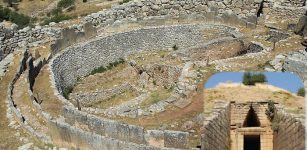 Mycenae Kingdom: Home To King Agamemnon And Tholos Tomb ‘Treasure of Atreus’
Civilizations | Jun 11, 2022
Mycenae Kingdom: Home To King Agamemnon And Tholos Tomb ‘Treasure of Atreus’
Civilizations | Jun 11, 2022 -
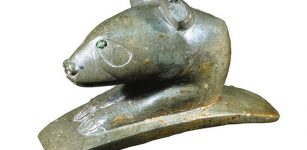 Use Of Tobacco Pipes By Hopewell People Tells A New Story
Archaeology | Jun 28, 2021
Use Of Tobacco Pipes By Hopewell People Tells A New Story
Archaeology | Jun 28, 2021 -
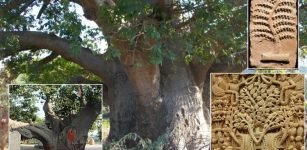 Kalpa Tree ‘Kalpavriksha’: The Sacred Wishing Tree Has Been Object Of Adornment And Worship Since Ancient Times
Featured Stories | Jul 22, 2016
Kalpa Tree ‘Kalpavriksha’: The Sacred Wishing Tree Has Been Object Of Adornment And Worship Since Ancient Times
Featured Stories | Jul 22, 2016



